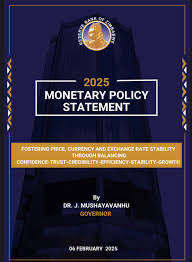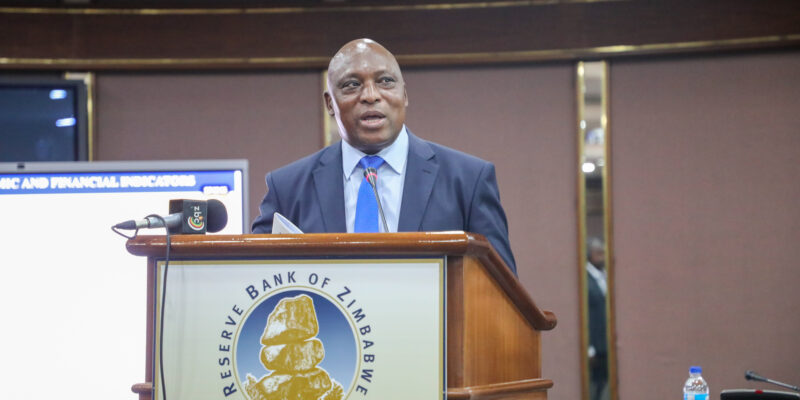In a significant move to bolster the Zimbabwe Gold (ZiG) currency and tackle inflation, the Reserve Bank of Zimbabwe (RBZ) has introduced a series of bold monetary policy measures. In his latest Monetary Policy Statement (MPS), RBZ Governor Dr. John Mushayavanhu laid out a comprehensive strategy aimed at restoring market confidence and tightening liquidity controls, all while ensuring that the local currency is fully backed.
One of the standout features of this new policy is the growth in Zimbabwe’s foreign currency and gold reserves. Since April 2024, its noted that these reserves have surged by an astounding 87%, reaching approximately US$550 million by January 2025.
This substantial accumulation guarantees full coverage of the local currency deposit base, a vital component for stabilizing the exchange rate. The central bank is committed to maintaining this backing through strategic purchases of foreign currency and precious metals, including royalties from the thriving mining sector.
To address the pressing issue of inflation, which hit a peak of 37.2% in October 2024, the RBZ has adopted a stringent monetary policy stance. The Bank Policy Rate was raised from 20% to 35% in September 2024, resulting in higher corporate lending rates that now range from 40% to 45.6%. These decisive measures are already yielding results, with inflation plummeting to 3.7% by December 2024, this is largely to greater exchange rate stability. The central bank has also tightened liquidity by increasing the statutory reserve requirement to 30% for both local and foreign currency deposits. Furthermore, the introduction of Non-Negotiable Certificates of Deposit (NNCDs) has effectively drained excess liquidity, reducing speculative activities that had previously fueled market volatility.
In efforts to stabilize the foreign exchange market, the RBZ has actively intervened in the Willing-Buyer Willing-Seller (WBWS) system. Between April and December 2024, the central bank injected around US$407.4 million to ensure sufficient foreign currency liquidity, followed by an additional US$35 million in January 2025. Dr. Mushayavanhu emphasized the importance of allowing market forces to dictate exchange rates while preventing speculative behaviors that could undermine monetary policy. He reiterated the bank’s commitment to narrowing the gap between official and parallel market exchange rates.

Despite these stringent monetary controls, there is optimism regarding Zimbabwe’s economic growth in 2025, with projections suggesting a 6% increase in GDP. The central bank attributes this positive outlook to ongoing price stability, improved agricultural output, and sustained foreign currency inflows. However, the Governor acknowledged that restoring confidence in the local currency remains a challenge. He urged businesses and financial institutions to actively incorporate the ZiG into their transactions and investments to strengthen its role in the economy.
The latest Monetary Policy Statement reflects the RBZ’s unwavering determination to fortify Zimbabwe’s financial system through disciplined policies. With continued foreign reserve accumulation and rigorous liquidity management, the central bank aims to secure the stability of the ZiG. Nevertheless, the long-term success of these measures will depend on maintaining market confidence and ensuring consistent implementation of policies in the months to come.














Comments